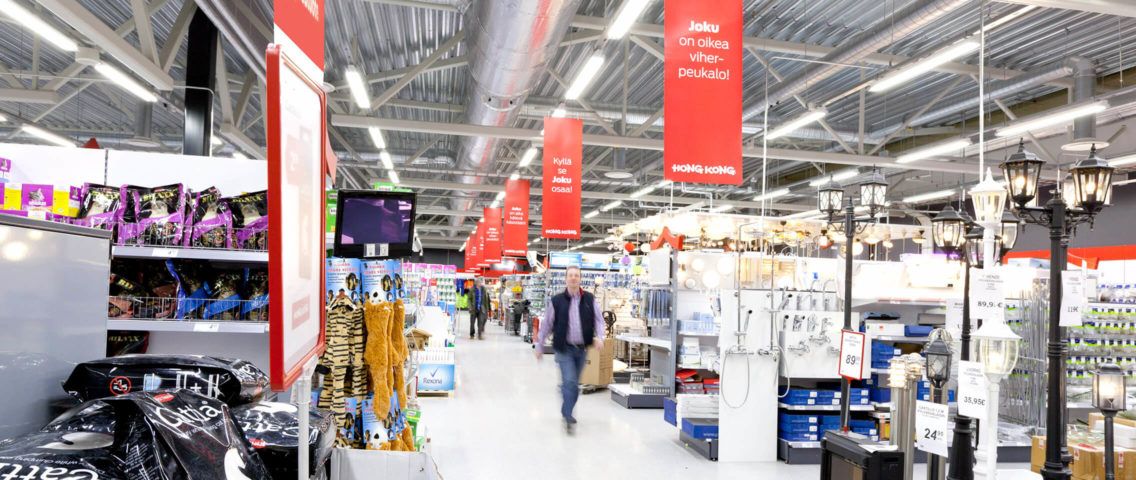Retail chain Hong Kong Group Oy is now using RELEX solutions for automated replenishment and demand forecasting across its 26 specialty department stores in Finland and in its online store. There has already been significant economic benefits during the first six months of collaboration.
Hong Kong Group imports and supplies a wide range of general merchandise. Much of its assortment is seasonal. Hong Kong wanted to improve its store replenishment and began working with RELEX in September 2013. Their goal was to lower inventory levels, improve in-store availability and liberate resources spent on ordering. Hong Kong was also looking for a system supplier that could help manage seasonal products.
Challenges and Goals
Before implementing RELEX the company used an automated replenishment system based on re-order points, whereby items were re-ordered when availability fell below a set level. The system relied on data entered manually by product managers and store personnel. This meant that a lot of resources was spent placing orders and keeping re-order points up to date. Moreover manually maintained control parameters could not be changed fast enough to react to constant changes in demand. Hong Kong has an extremely broad product range that changes substantially from season to season. It also sources from a large number of suppliers around the world.
- Strong seasonal variations in demand, assortment and footfall
- A wide selection of products from different suppliers around the world and with a broad range of price points
- Inventory level and availability optimisation needed to take shipping and storage costs in a large supplier network into account
- Campaign replenishment
RELEX’s Solutions
In 2014 RELEX’s automated replenishment solution, featuring automated replenishment-parameters optimisation, was implemented in all Hong Kong Group’s 26 department stores. The chain chose RELEX because of the flexibility of its system and because it had had the chance to study the results of a simulation that used the group’s existing data and showed how the system could benefit their supply chain. The implementation project began at the end of November 2013 and the first Hong Kong stores were already piloting RELEX by early 2014.
The implementation was undertaken step by step, beginning with a small number of suppliers in two pilot stores. System deployment was gradually expanded across other product groups until the pilot stores were using RELEX to replenish their entire assortment. After the pilot, Hong Kong decided to roll out RELEX across the whole chain and now all 26 stores are being replenished automatically.
“We knew we could expect to see results fast, but we were already registering clear improvements during the seven week pilot phase.”
Juha Engblom, Project manager, Hong Kong
Results & Next Steps
Hong Kong is pleased with its RELEX system and with the way the project progressed. Following implementation in-store availability has clearly improved while inventory levels have fallen. Its staff have also responded positively to the new RELEX solution and the improvements can be seen in the stores as well.
Juha Engblom, project manager at Hong Kong, feels that this project with RELEX has moved faster and been easier than expected. “We knew we could expect to see results fast,” Engblom says, “but we were already registering clear improvements during the seven week pilot phase.”
“Even after just a few months we saw improvements in in-store availability and inventory turnover. Orders have been centralised and automation has made it possible for us to deploy our people in a more productive way. In the stores we can now focus on customer service and maintaining the store environment,” Engblom says.
In the future Hong Kong Group wants to extend its use of RELEX in managing the replenishment of seasonal and campaign products even more efficiently by improving the process so that availability is as high as possible even during exceptional periods.
Using the ‘push-pull-push’ model that the RELEX and Hong Kong Group teams implemented, the initial distribution of the products prior to a season or a campaign are based on historical sales data from the stores. Supplementary orders, placed in response to actual sales, take this data into account, as well as the final allocation to the strongest performing stores towards the end of the campaign.
